Simple Roast or Grilled Lemon Chicken
Embark on a culinary journey with our tantalizing Lemon Brined Chicken, a versatile dish that can be either roasted to perfection or grilled for a delightful smoky twist. This recipe promises a symphony of flavors as the chicken absorbs the zesty essence of lemons during a relaxing brining process, resulting in juicy and succulent poultry that will surely captivate your taste buds.
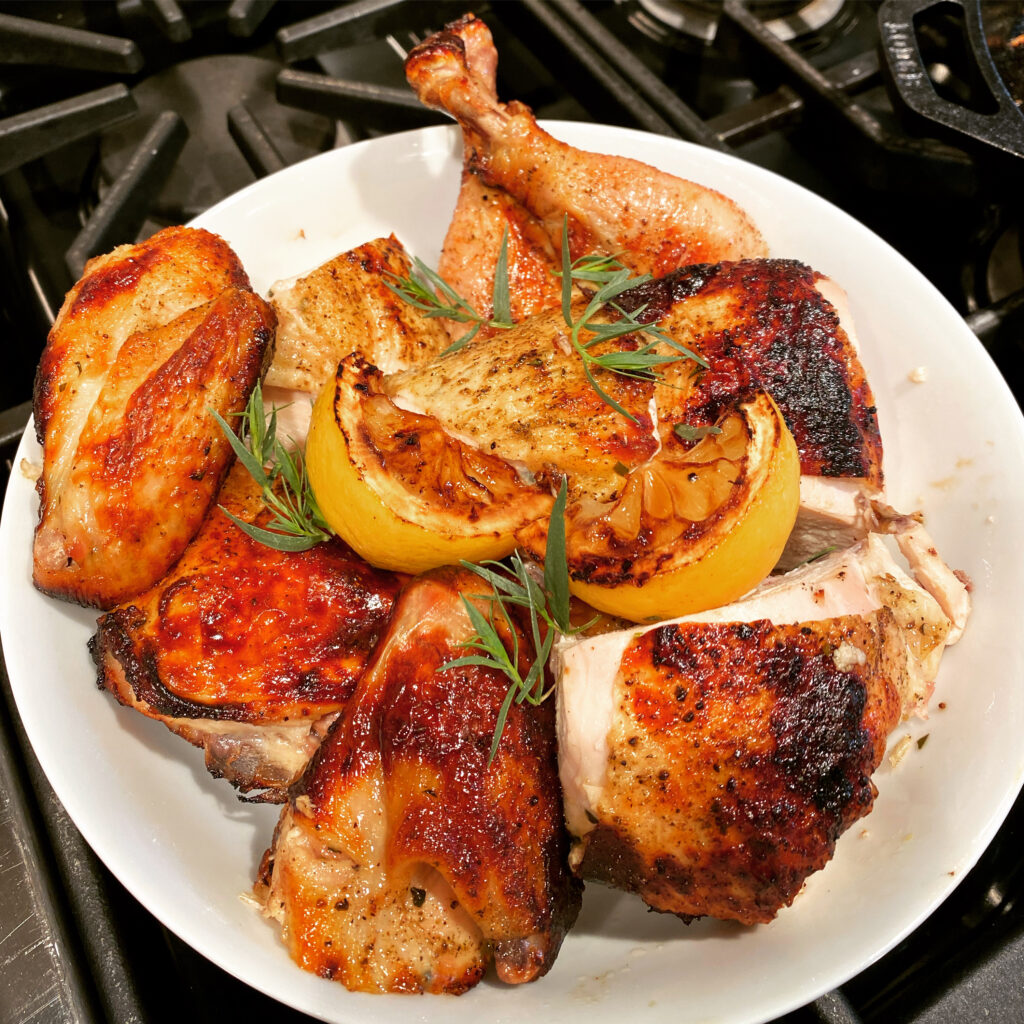
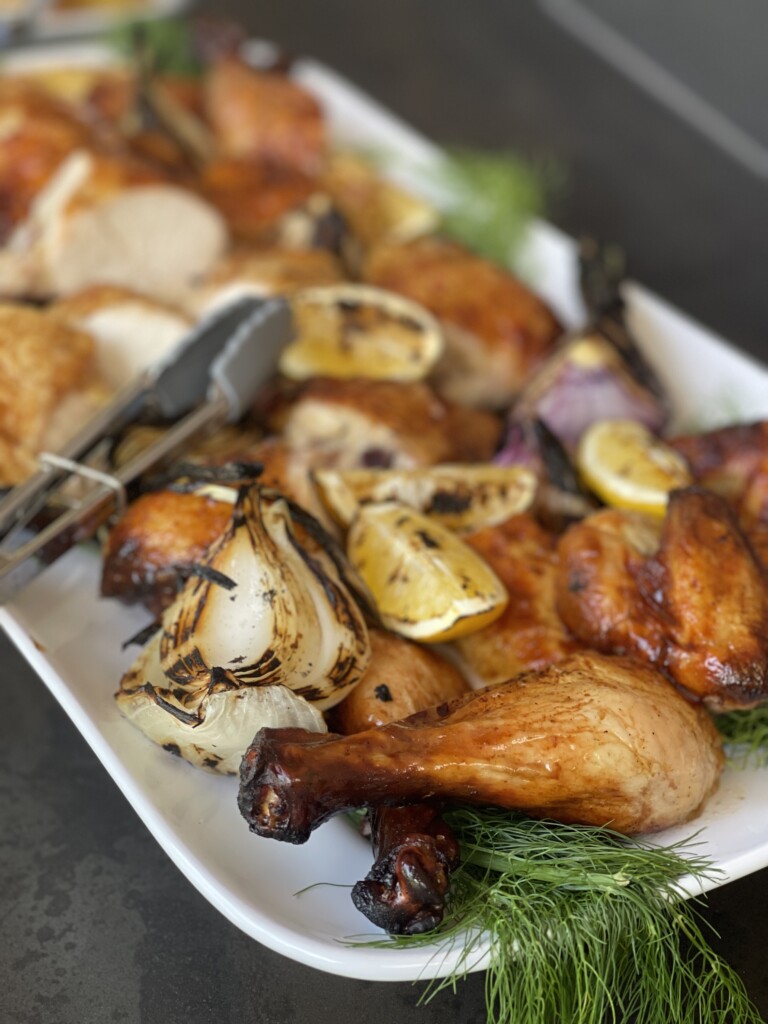
Brining chicken is a culinary technique that involves soaking the meat in a solution of salt and water, sometimes combined with other ingredients like sugar, herbs, and spices. The process offers several benefits that enhance the chicken’s flavor, juiciness, and tenderness. Here are some reasons why brining chicken is considered beneficial:
- Moisture Retention: Brining helps the chicken retain moisture by allowing the salt to break down muscle fibers and proteins. As the chicken absorbs the brine, it becomes infused with additional water, leading to a juicier and more succulent result.
- Flavor Infusion: The salt in the brine not only helps with moisture retention but also carries other flavors into the chicken. This is especially true if you add herbs, spices, or aromatic ingredients to the brine, creating a more complex and flavorful end product.
- Tenderizing Effect: The salt in the brine can act as a tenderizer by disrupting the structure of muscle proteins. This makes the chicken more tender and less prone to becoming tough during cooking.
- Uniform Seasoning: Brining ensures that the entire chicken is evenly seasoned. Unlike surface seasoning, which may only flavor the outer layers of the meat, brining allows the salt and other flavors to penetrate deep into the flesh.
- Reduced Cooking Time: Brined chicken tends to cook more quickly because the increased moisture content helps conduct heat more efficiently. This can be particularly advantageous when roasting or grilling, resulting in a shorter cooking time and reduced risk of overcooking.
- Versatility: Brining is versatile and can be adapted to various flavor profiles by adjusting the ingredients in the brine. Whether you prefer a sweet and savory profile, a citrusy zing, or a combination of herbs and spices, brining allows you to customize the taste of your chicken.
While brining is a fantastic technique for improving the texture and flavor of chicken, it’s essential to follow recommended brining times and ratios to avoid overly salty results. The process is particularly popular for whole birds, such as roast or grilled chickens, where the benefits of brining can truly shine.
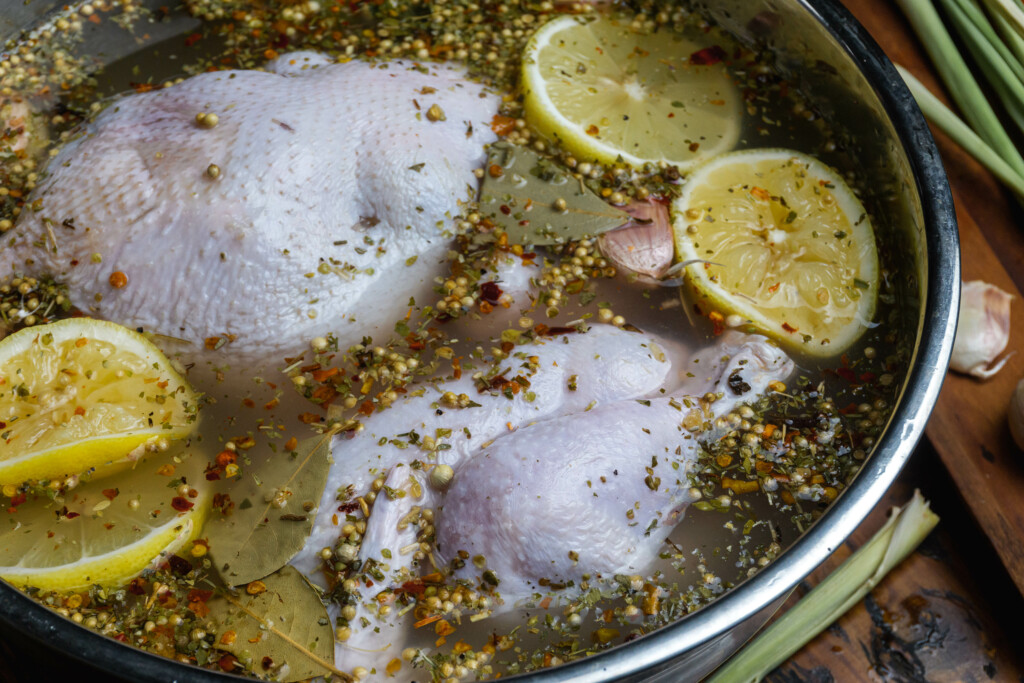
Chicken soaked in salt water brine with lemon, herb and spice
Grilling chicken over charcoal imparts a smoky flavor and a delicious char that many people find irresistible. Here’s a step-by-step guide on how to charcoal grill chicken. When Grilling I prefer to Spatchcock my chicken. Grilling spatchcock chicken is a simple and effective way to cook a whole chicken, ensuring even cooking and a deliciously crispy skin. Spatchcocking involves removing the backbone of the chicken to flatten it out for more uniform cooking. Here’s a straightforward guide on how to grill spatchcock chicken

Creating a lemon-inspired table setting brings a refreshing and vibrant atmosphere to your dining experience. Here’s a description of a charming lemon-themed table setting.
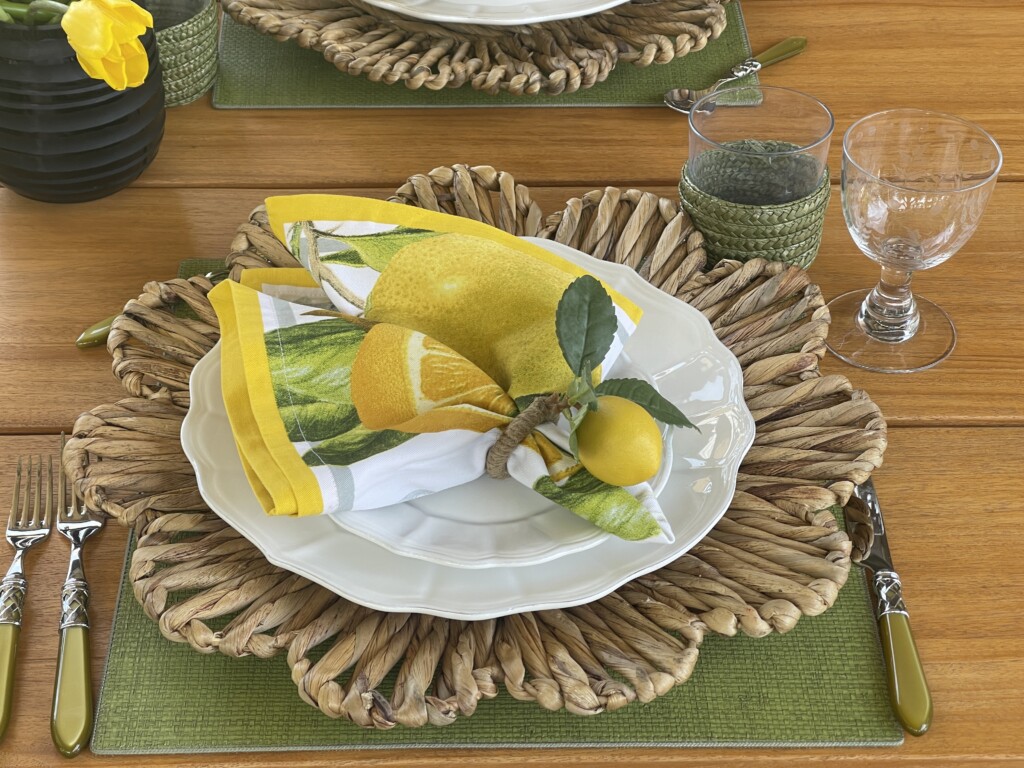
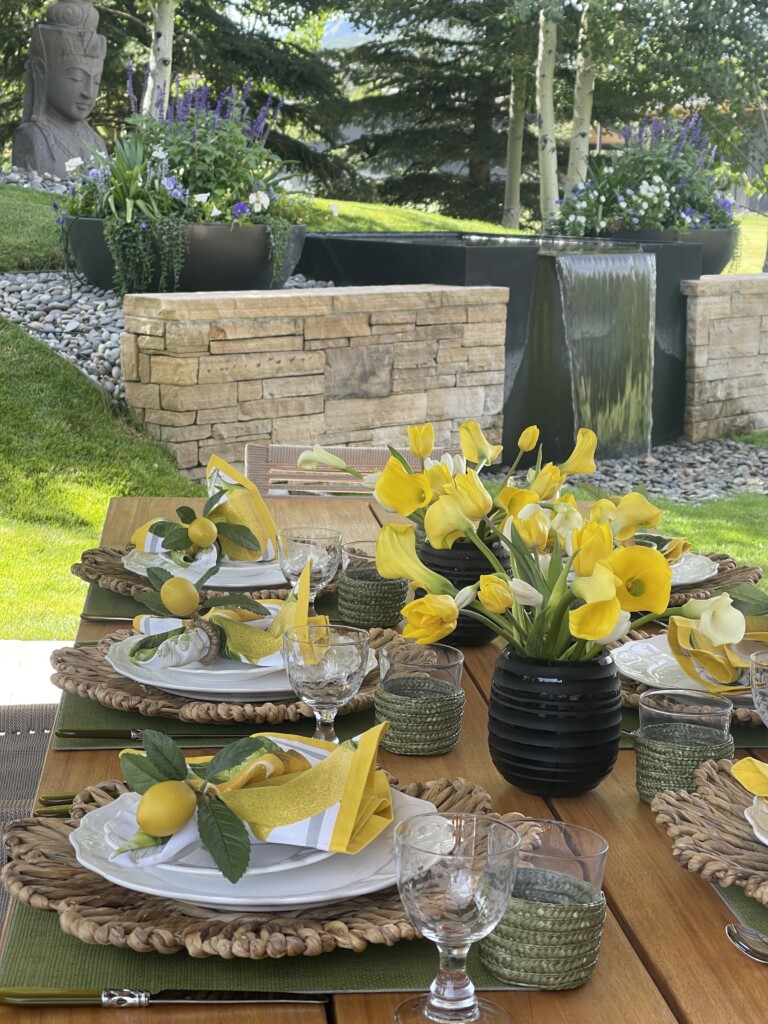
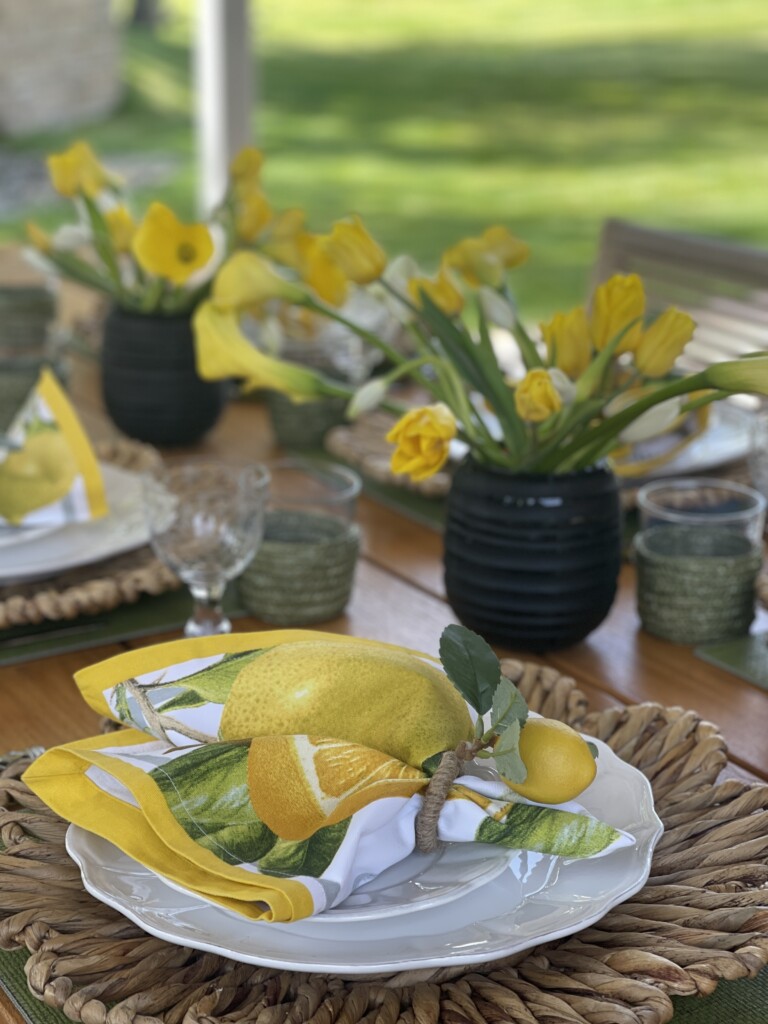
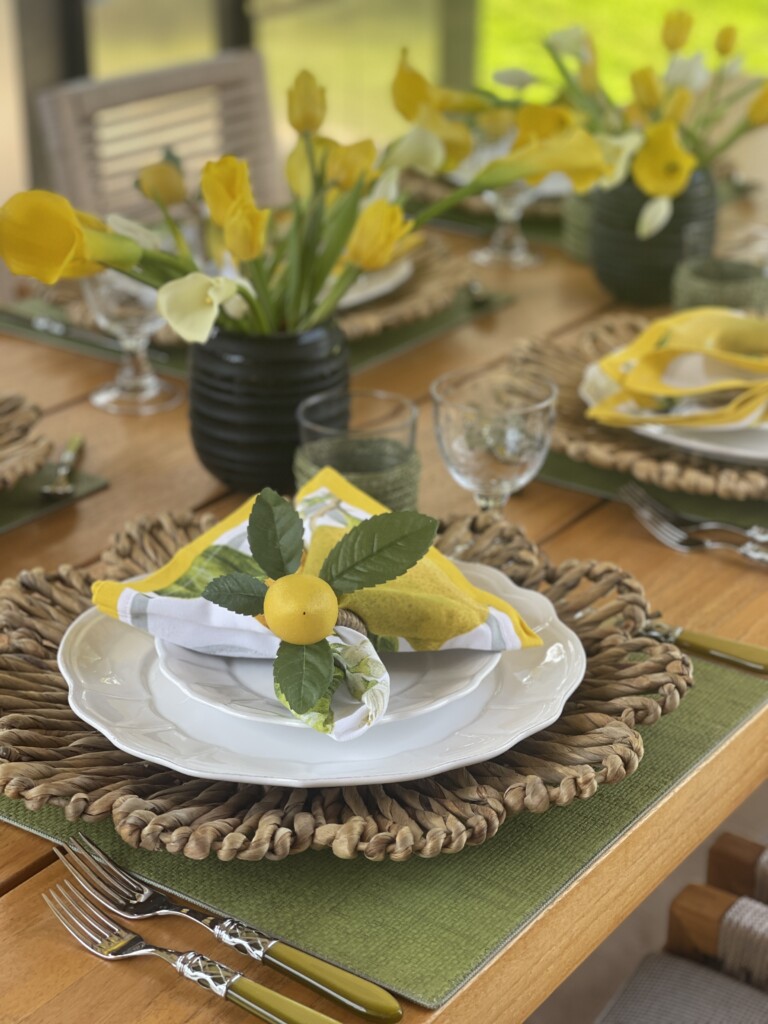
Simple Roast or Grilled Lemon Chicken
This recipe promises a symphony of flavors as the chicken absorbs the zesty essence of lemons during a relaxing brining process, resulting in juicy and succulent poultry that will surely captivate your taste buds.
Ingredients
Brine
- 5 lemons, halved
- 6 bay leaves
- 1/2 bunch (4 ounces) flat-leaf parsley
- 1/2 bunch (1 ounce) thyme
- 1/4 cup clover honey
- 1 head garlic, halved through the equator
- 1/8 cup black peppercorns
- 1 cup (10 ounces) kosher salt
- 1 gallon water
- Canola oil
- Kosher salt
Equipment
- Stockpot
- Container
For the Roasted Chicken
- 1 whole chicken, 2 1/2 to 3 pounds
- 2 fennel bulbs, trimmed and quartered
- 2 large leeks, trimmed and cut in half
- 4 carrots, trimmed and cut in half
- 2 small onion, quartered
- 8 small red-skinned potatoes, halved
- Clarified butter
- 1 lemon, sliced
Equipment
- Parchment-lined cutting board
- Paring knife
- Abrasive green scrub pad
- Kitchen twine
- Kitchen shears
- Roasting pan
- Meat thermometer
- Chef’s knife
Instructions
Brine
1. Mix all of the brine ingredients and bring to a boil. Once boiling, remove from heat and let cool, then pour into a container large enough to hold both the brine and the chicken and cool in the refrigerator until chilled.
2. Prepare the chicken. Remove the neck and innards if they are still in the cavity of the chicken. Using a paring knife, cut out the wishbone from the chicken—this will make it easier to carve the chicken. Submerge the chicken in the cold brine for 8 to 12 hours.
3. When done brining, remove the chicken and truss to ensure even cooking. Discard the brine.
4. Leave the brined, trussed chicken uncovered in the refrigerator for two days. Doing so removes moisture from the skin and allows it to crisp beautifully during roasting.
5. Remove the chicken from the refrigerator and let stand at room temperature for 1 ½ to 2 hours, or until it comes to room temperature.
6. Prepare the vegetables.
8. Roast. Preheat the oven to 475°F. Brush the chicken with clarified butter and season all sides with salt. Make a nest in the center of the vegetables and nestle the chicken in it. Roast for 20 to 25 minutes. Reduce the heat to 400°F and roast for an additional 30 to 45 minutes, or until the temperature registers 160°F in the meatiest portions of the bird—the thighs, and under the breast where the thigh meets the breast—and the juices run clear where the leg joint meets the thigh. If necessary, return the bird to the oven for more roasting; check it every 5 minutes. Transfer the chicken to a carving board and let rest for 20 to 30 minutes.
9. Just before serving, set the pan of vegetables over medium heat and reheat the vegetables, turning them to coat with the pan juices. Finish with a squeeze of lemon. Carve the chicken into serving pieces, arrange over the vegetables, finish with grey sea salt, and serve.

